13 Garden Design Tricks That Work Especially Well in Fall
Fall has a way of bringing out some of the most striking colors and textures in the garden. With the right design choices, you can highlight the season’s beauty and create spaces that feel warm and inviting. Simple tricks like layering plants, adding seasonal accents, and using natural light can make your garden stand out well into the cooler months.
This post may contain affiliate links, which helps keep this content free. Please read our disclosure for more info.
Layer Plants for Fall Color
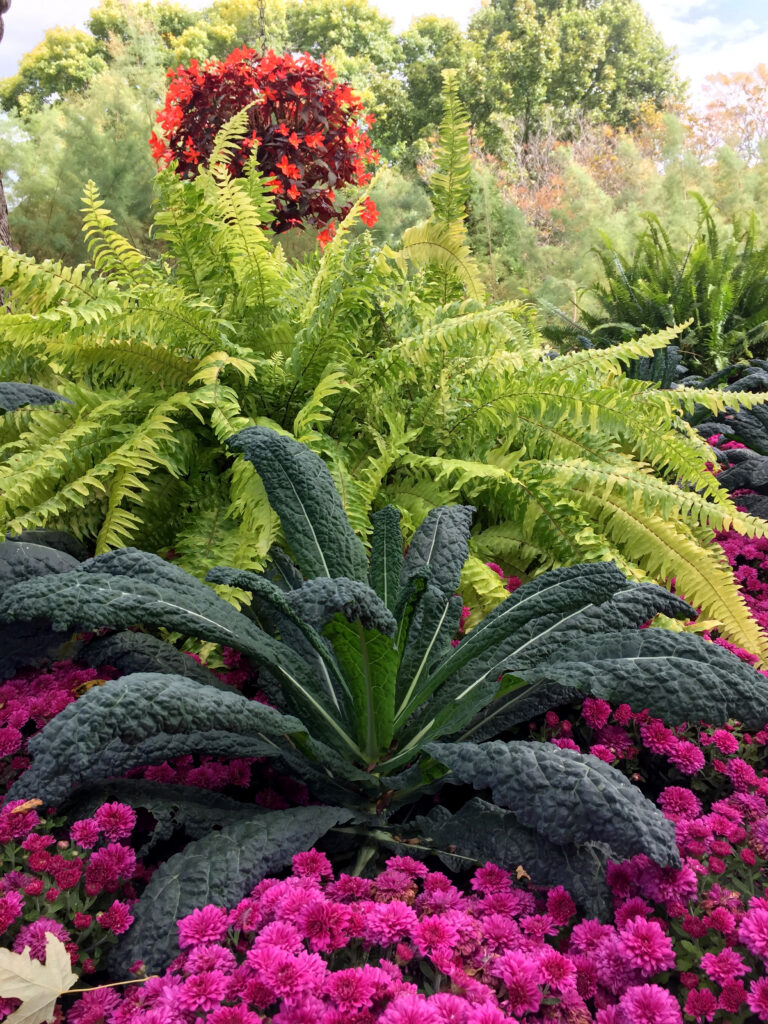
Layering different types of plants creates depth and richness that feels especially alive in autumn. Tall shrubs or small trees provide a backdrop while medium perennials and low ground covers fill in gaps with complementary tones. The contrast between fiery maples above and golden grasses below can make the garden feel full and balanced.
This technique also stretches the season of interest since not every layer changes color at the same time. Early-turning trees may drop leaves just as shrubs reach their peak, and perennials can continue showing color beneath them. The result is a display that shifts gradually, keeping the garden attractive well into late fall.
Use Ornamental Grasses
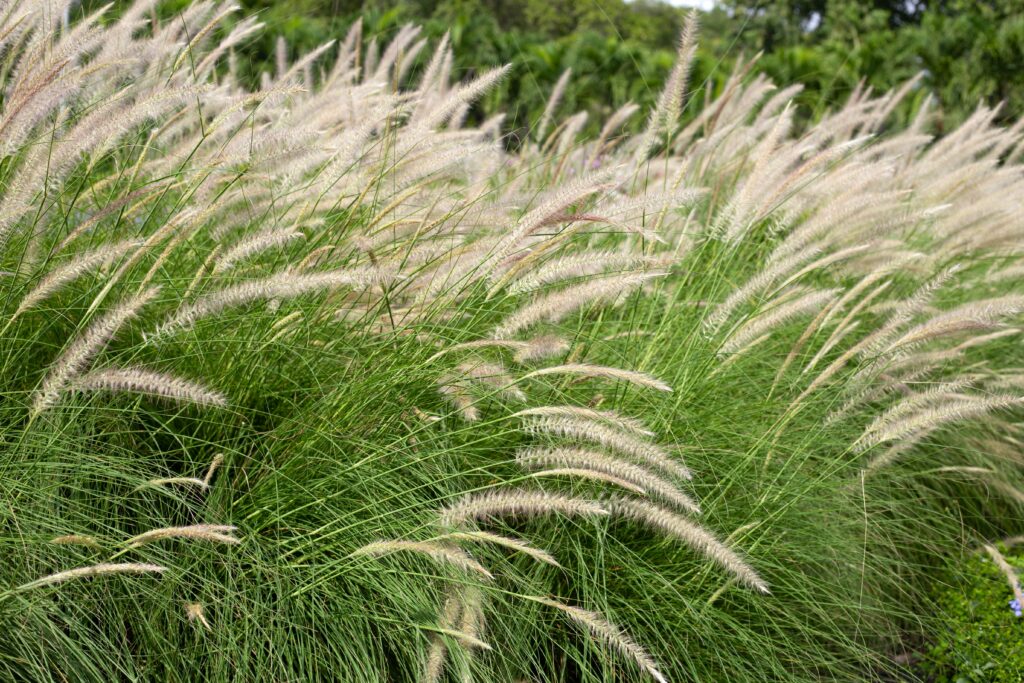
Few plants catch the autumn light as beautifully as ornamental grasses. Their plumes sway in the breeze and bring a sense of movement that keeps a garden from feeling static. Varieties like switchgrass or feather reed grass also add structure and height at a time when other plants are fading.
When planted in groups, grasses act like a natural curtain that frames surrounding flowers or foliage. Their seed heads last through frost and give texture even when the rest of the garden goes quiet. Birds often flock to them, adding an extra layer of seasonal charm.
Frame Spaces with Evergreens
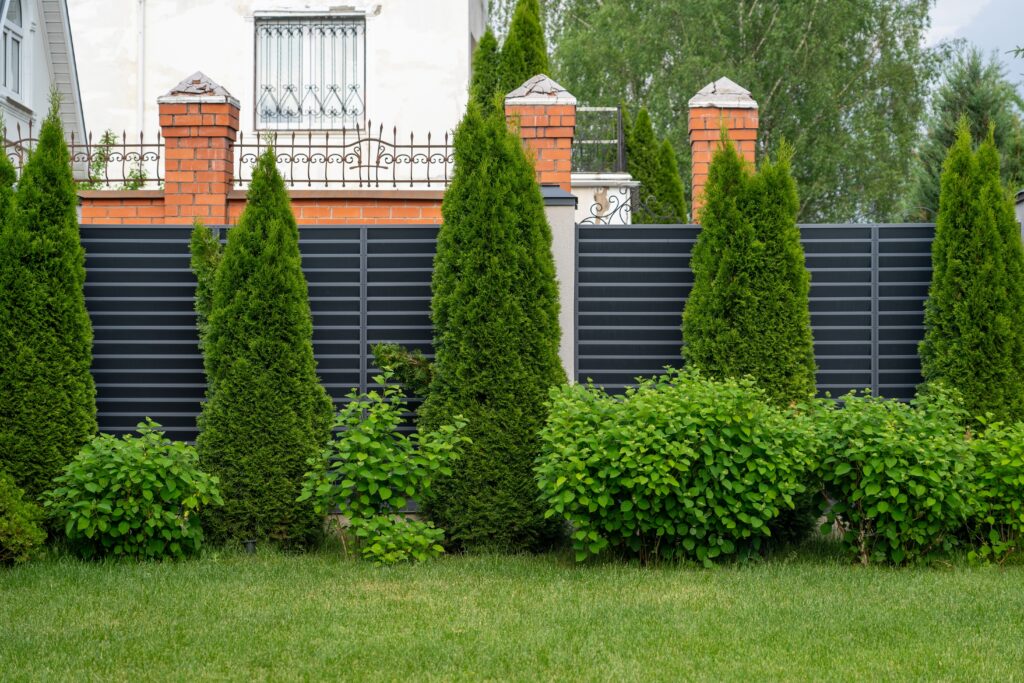
Evergreens act as anchors in fall when much of the garden is changing. Their steady green tones provide a backdrop that makes autumn leaves and late flowers appear even more vibrant. Boxwood, juniper, or holly are classic options that can define pathways or border beds.
They also add a sense of order to the garden, especially when placed in key spots like corners or entryways. Because they keep their foliage year-round, evergreens prevent the space from looking empty once leaves drop. This reliability makes them an essential design tool in any fall setting.
Add Late-Blooming Perennials
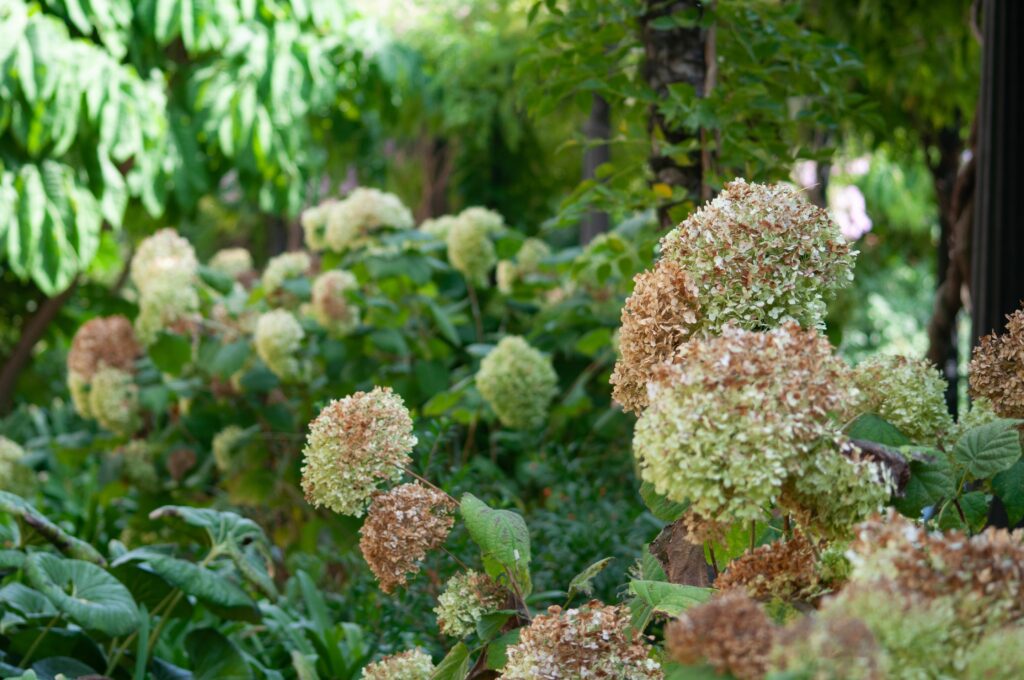
Flowers don’t have to vanish after summer. Plants like sedum, asters, and chrysanthemums put on a show just as many gardens begin winding down. Their bursts of purple, pink, and rust-colored blooms help carry the display into October and even November.
Planting these perennials in clusters gives the garden vibrant color blocks that are easy to notice from a distance. They also attract pollinators searching for food before winter, which keeps the garden lively with bees and butterflies. This blend of beauty and activity makes them worth including in any fall design.
Highlight Fall Foliage Trees
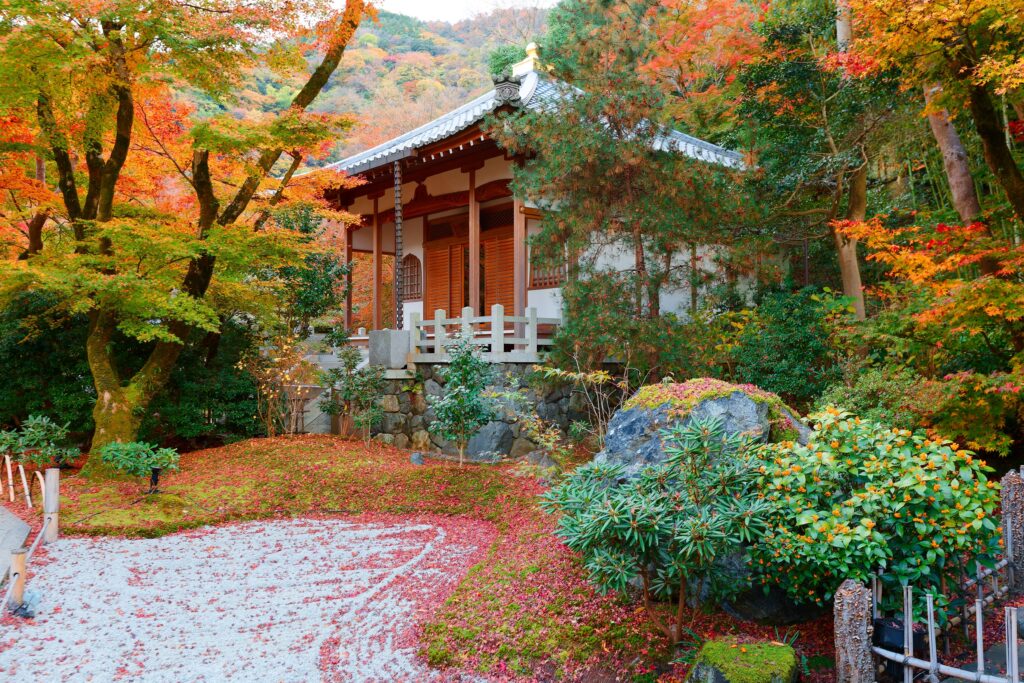
Some trees are at their best during autumn, and highlighting them in your design ensures they become natural focal points. Japanese maples glow in shades of crimson, while dogwoods can shift from green to burgundy almost overnight. By placing them in visible spots, such as near a patio or path, you guarantee their color gets full attention.
These trees also bring structure beyond their leaves. Their branching patterns add interest once foliage falls, giving the garden a sculptural element for winter. This dual purpose makes them valuable long after the leaves hit the ground.
Mix Textures for Contrast
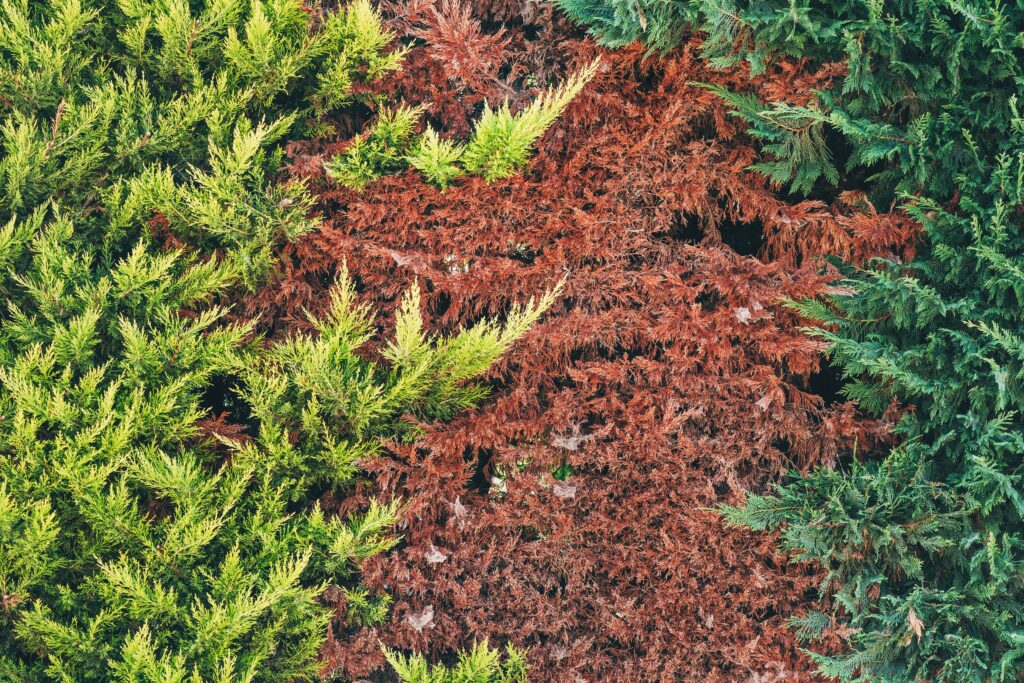
Texture often stands out more than color in fall gardens. Pairing bold leaves with airy seed heads creates a layered effect that feels dynamic. For example, large hosta leaves next to the fine stems of Russian sage produce a striking contrast.
The variation in texture also helps the eye move through the garden. Instead of one flat scene, each section feels distinct, which adds energy to the overall design. This simple adjustment makes borders and beds look carefully arranged without feeling forced.
Plant Cold-Tolerant Containers
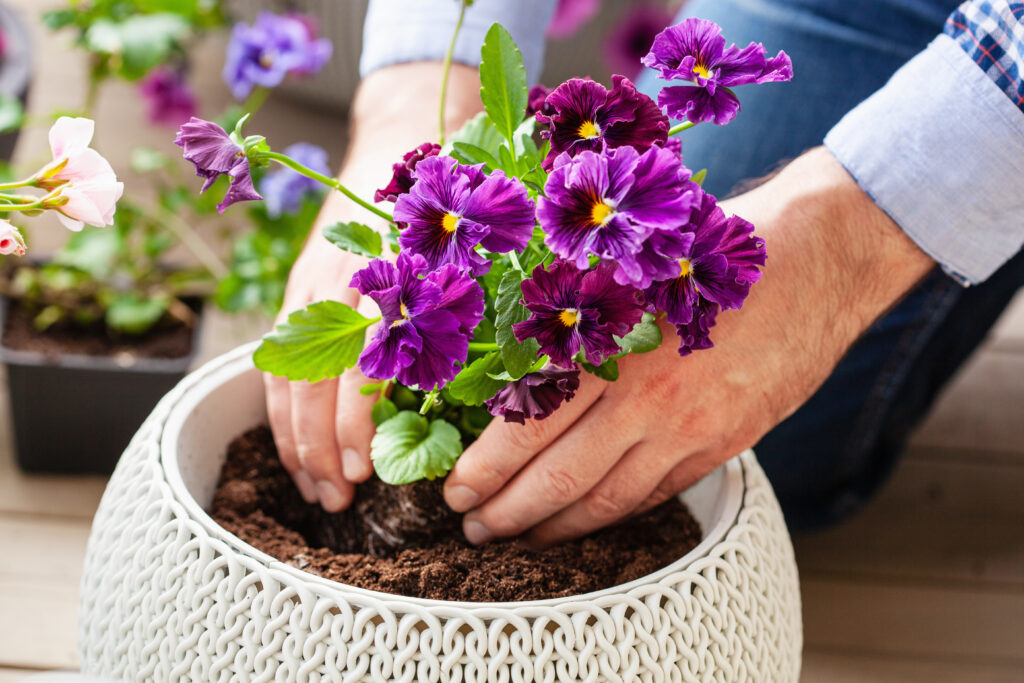
Containers are an easy way to refresh outdoor areas in autumn. Filling pots with kale, pansies, or violas ensures color and texture even as temperatures cool. These hardy plants thrive in conditions that would finish off summer flowers.
Placing containers near entryways or patios brings the season closer to daily life. They act as instant accents that can be swapped out as needed, keeping the garden feeling lively. For added effect, you can mix foliage plants with blooming ones for richer variety.
Incorporate Pumpkins and Gourds
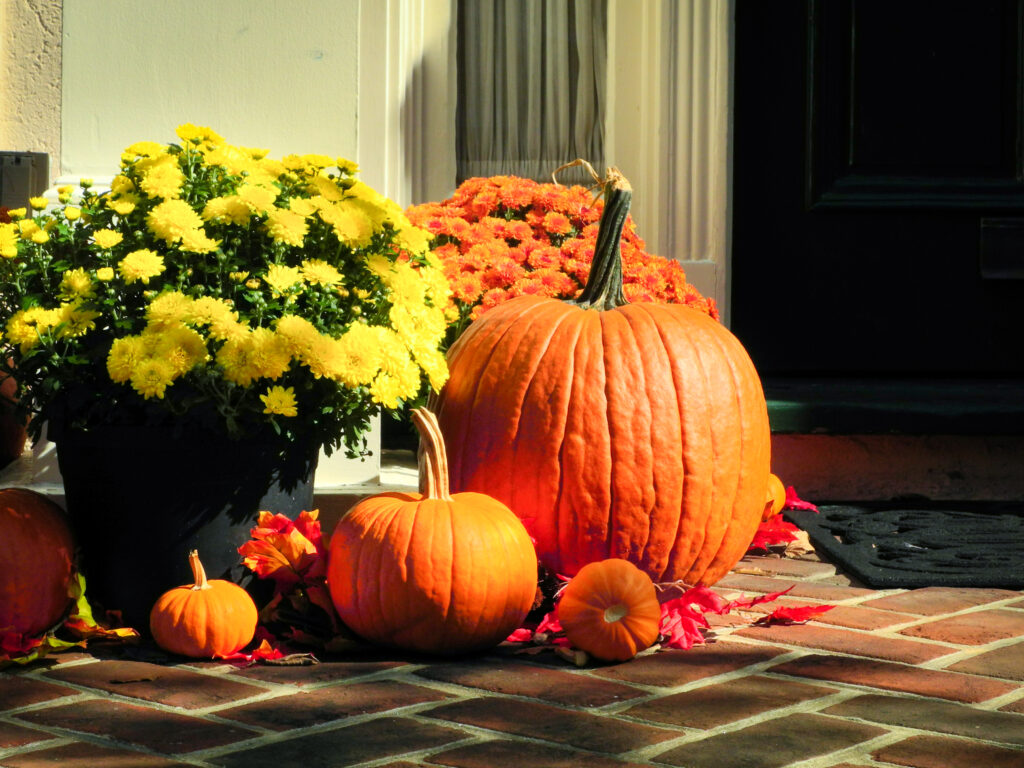
Seasonal produce can be just as effective as plants when it comes to design. Pumpkins, gourds, and squash tucked among borders or lined along a path provide warmth and charm. Their shapes and colors blend naturally into the autumn palette.
You don’t need many to make an impact. A few well-placed clusters create a festive feel that ties the garden to the season. As a bonus, they can be swapped out easily as the weeks go by, giving the garden a refreshed look without much effort.
Create Pathways with Natural Materials
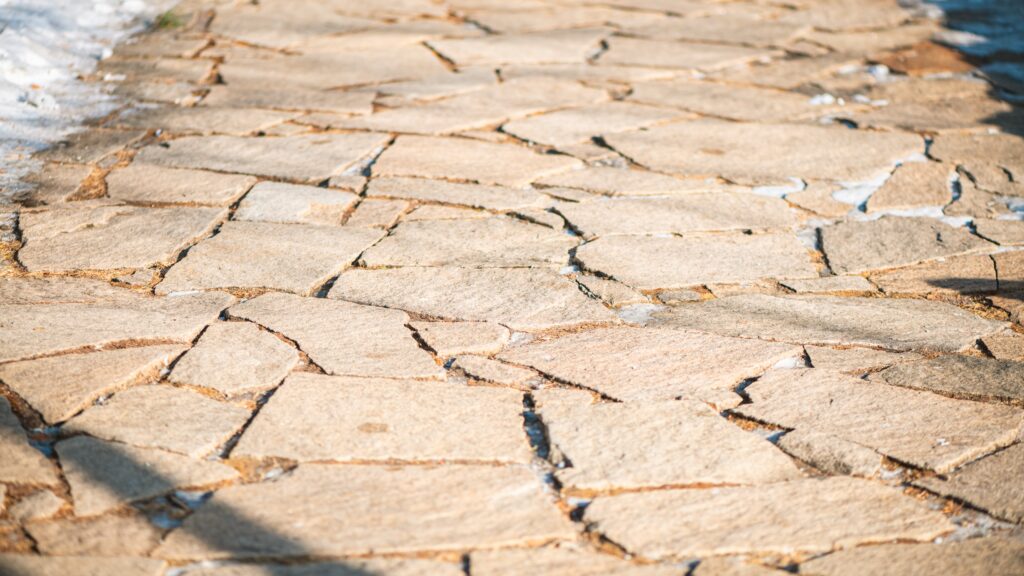
Pathways made of stone, gravel, or bark chips look especially inviting in fall. Their earthy tones pair beautifully with changing foliage and fallen leaves. A well-placed path also draws visitors through the garden, encouraging exploration.
The materials themselves bring texture and contrast to softer plantings. A rustic gravel path winding between borders feels cozy and seasonal, while a stone walkway can look timeless against fiery maples. Each choice shapes the mood of the garden while remaining functional.
Light Up the Garden
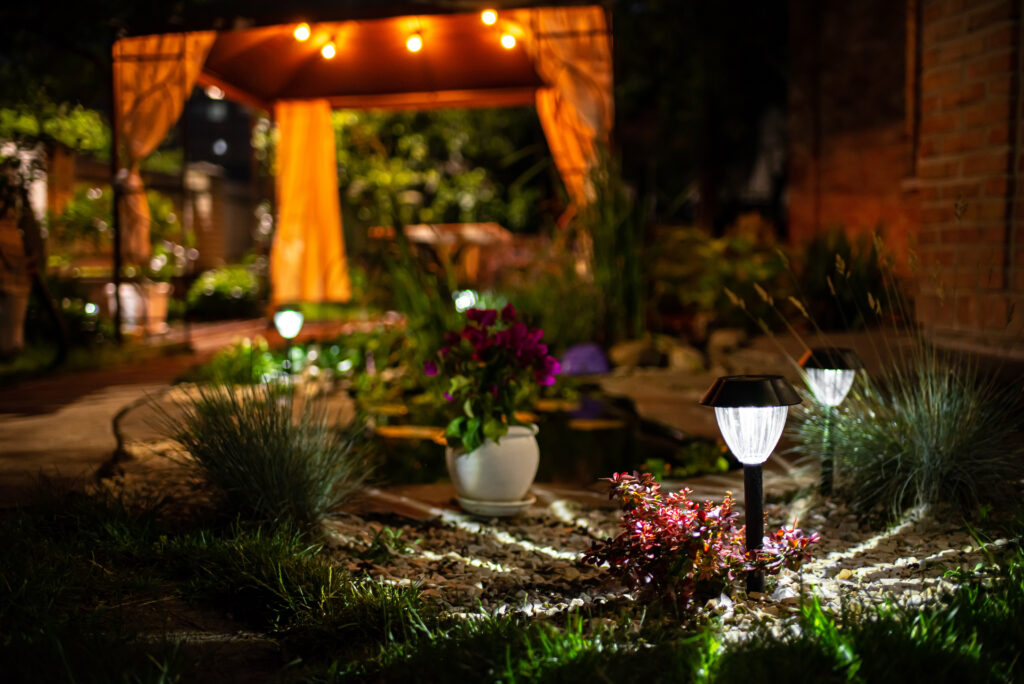
As days grow shorter, lighting becomes an important part of garden design. String lights, lanterns, or solar stakes bring warmth to spaces that might otherwise fade into darkness. They also highlight textures and colors that look different at night than during the day.
Lighting doesn’t need to be elaborate. A few soft glows near pathways or around seating areas can transform how the garden feels after sunset. The right placement makes the garden enjoyable well into the evening hours of autumn.
Use Mulch for Warmth and Cohesion
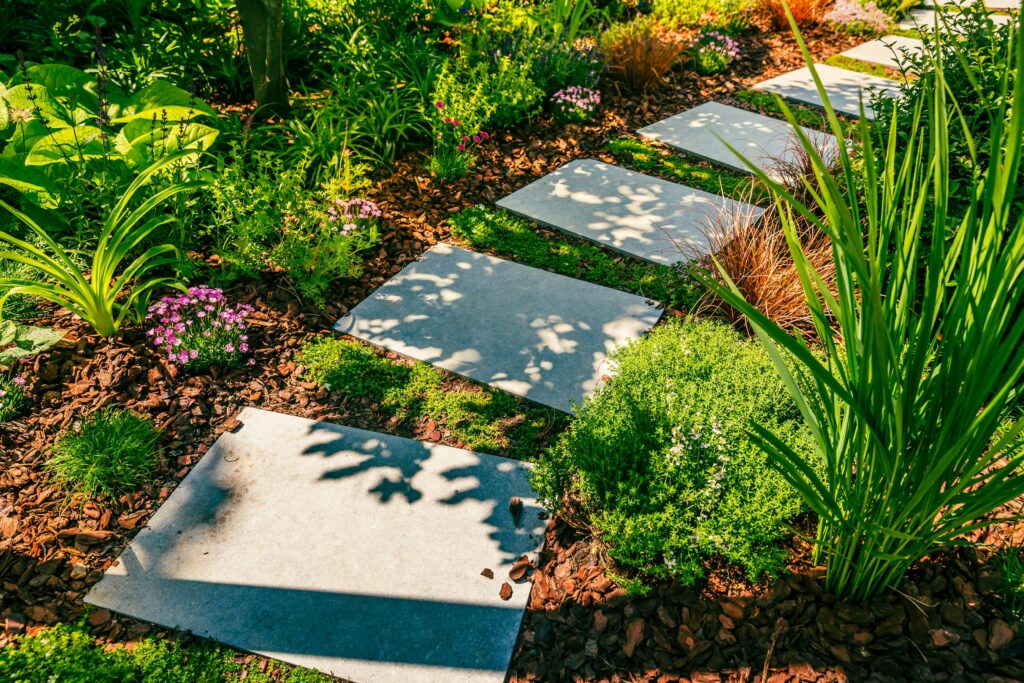
Mulch ties garden beds together visually while serving a practical purpose. A fresh layer of bark or shredded leaves makes colors pop and keeps the soil insulated as nights cool. This extra warmth helps roots handle temperature shifts more comfortably.
From a design perspective, mulch creates clean lines and reduces clutter. Beds look intentional rather than scattered, which gives the entire space a polished finish. Even as leaves begin to fall, mulch helps keep the garden tidy and welcoming.
Add a Fire Pit or Focal Feature
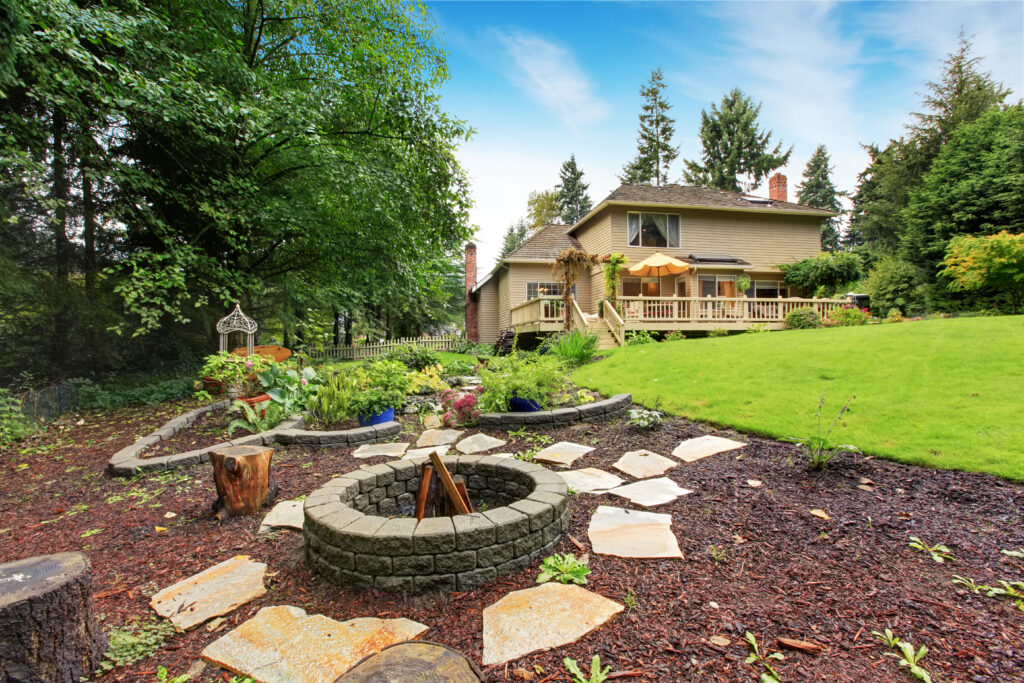
A fire pit becomes a natural centerpiece in fall gardens. The glow draws people outdoors even on chilly nights, making the garden an extension of the living space. Rustic benches or stone seating around it add to the cozy atmosphere.
If fire pits aren’t possible, other features like birdbaths or large urns work just as well. Placing them where paths meet or beds curve gives the garden a sense of focus. These accents tie the design together and invite people to linger.
Frame Views Toward Seasonal Scenes
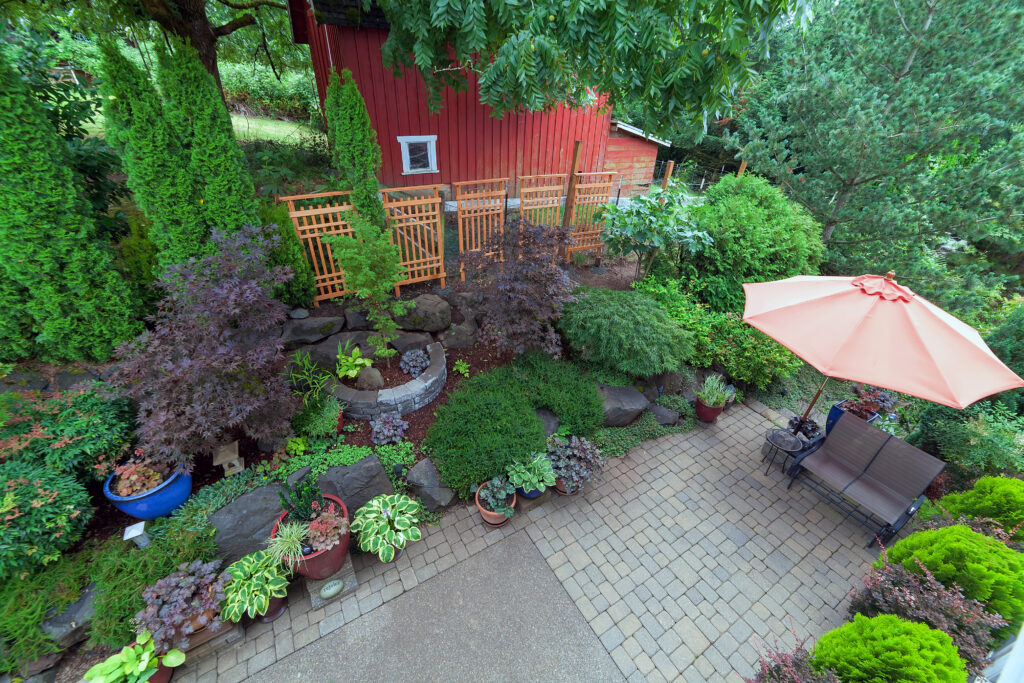
Directing the eye toward special views gives the garden extra impact. Positioning an arbor, trellis, or row of shrubs to frame a tree in full color makes the moment feel intentional. These framed perspectives turn ordinary backdrops into living pictures.
The technique works well with sunsets, borrowed views of neighboring trees, or even simple features like a rustic bench. By guiding sightlines, you shape how visitors experience the space. In fall, when colors are at their richest, this trick has an especially strong effect.
This article originally appeared on Avocadu.
